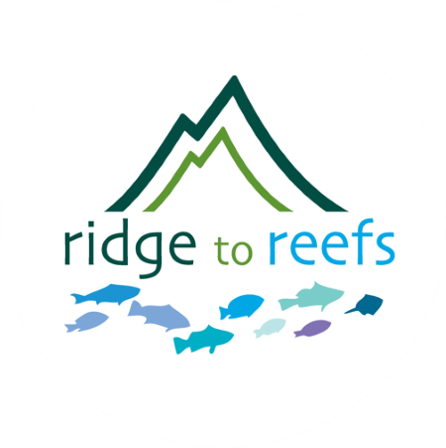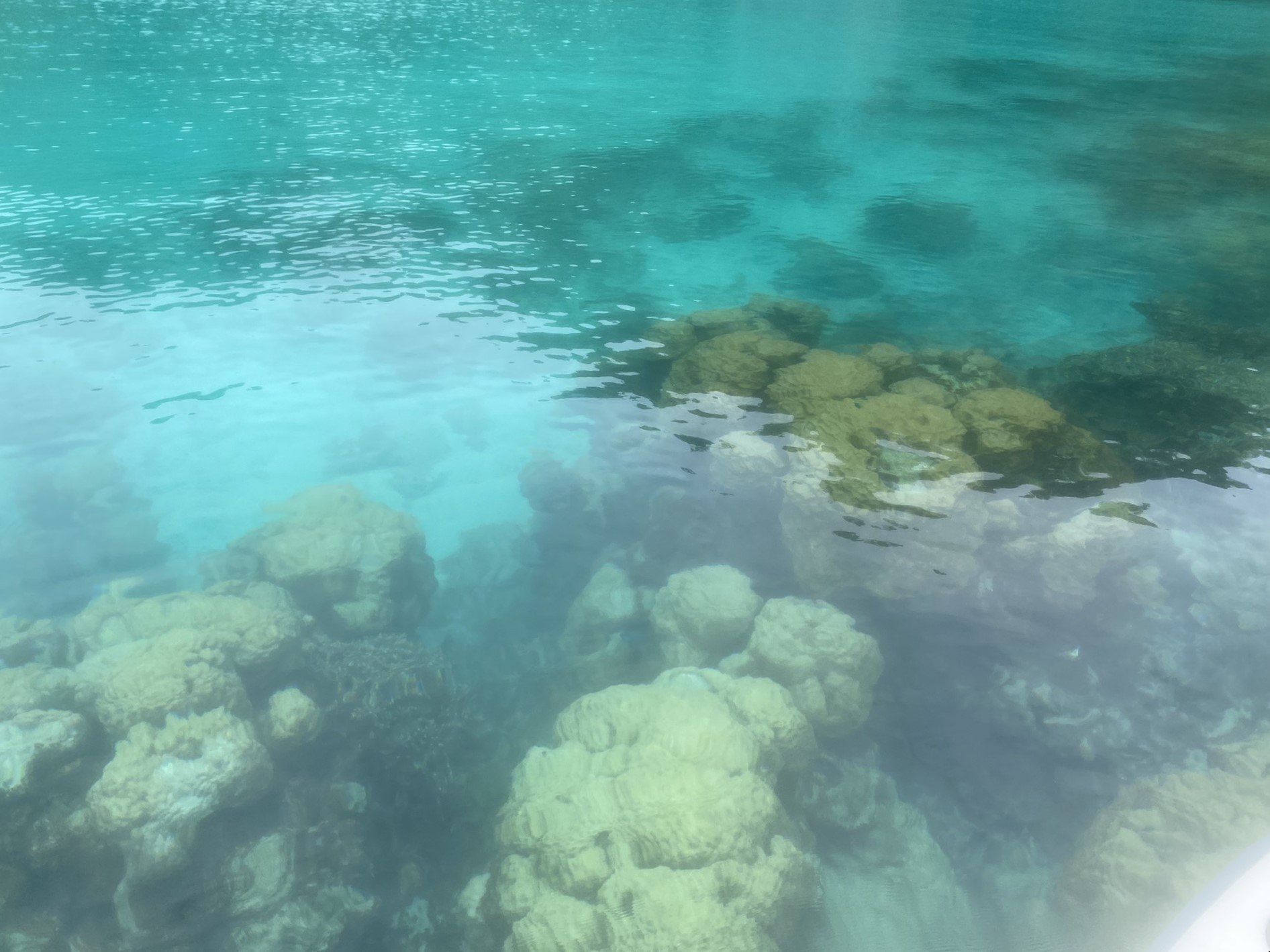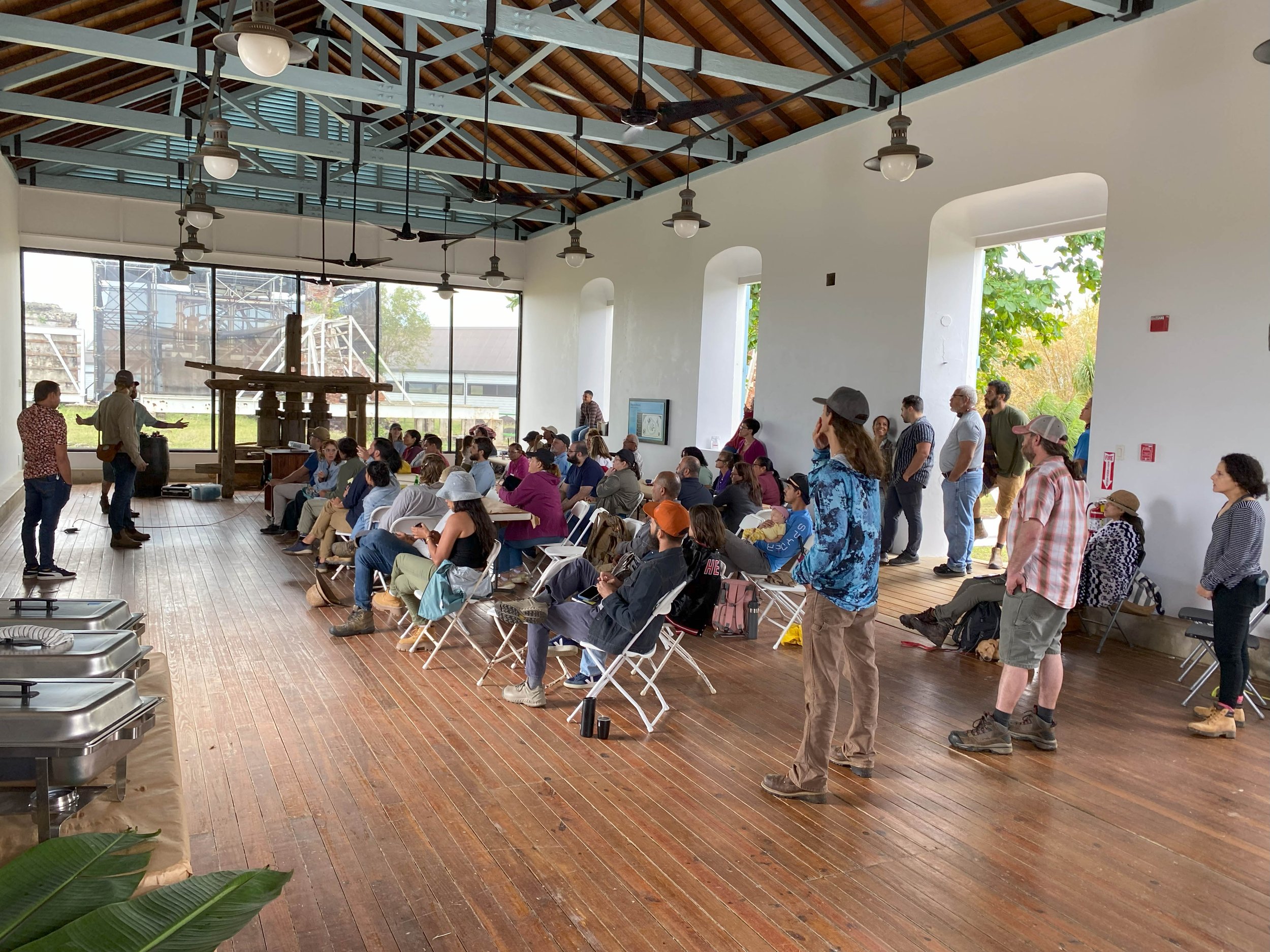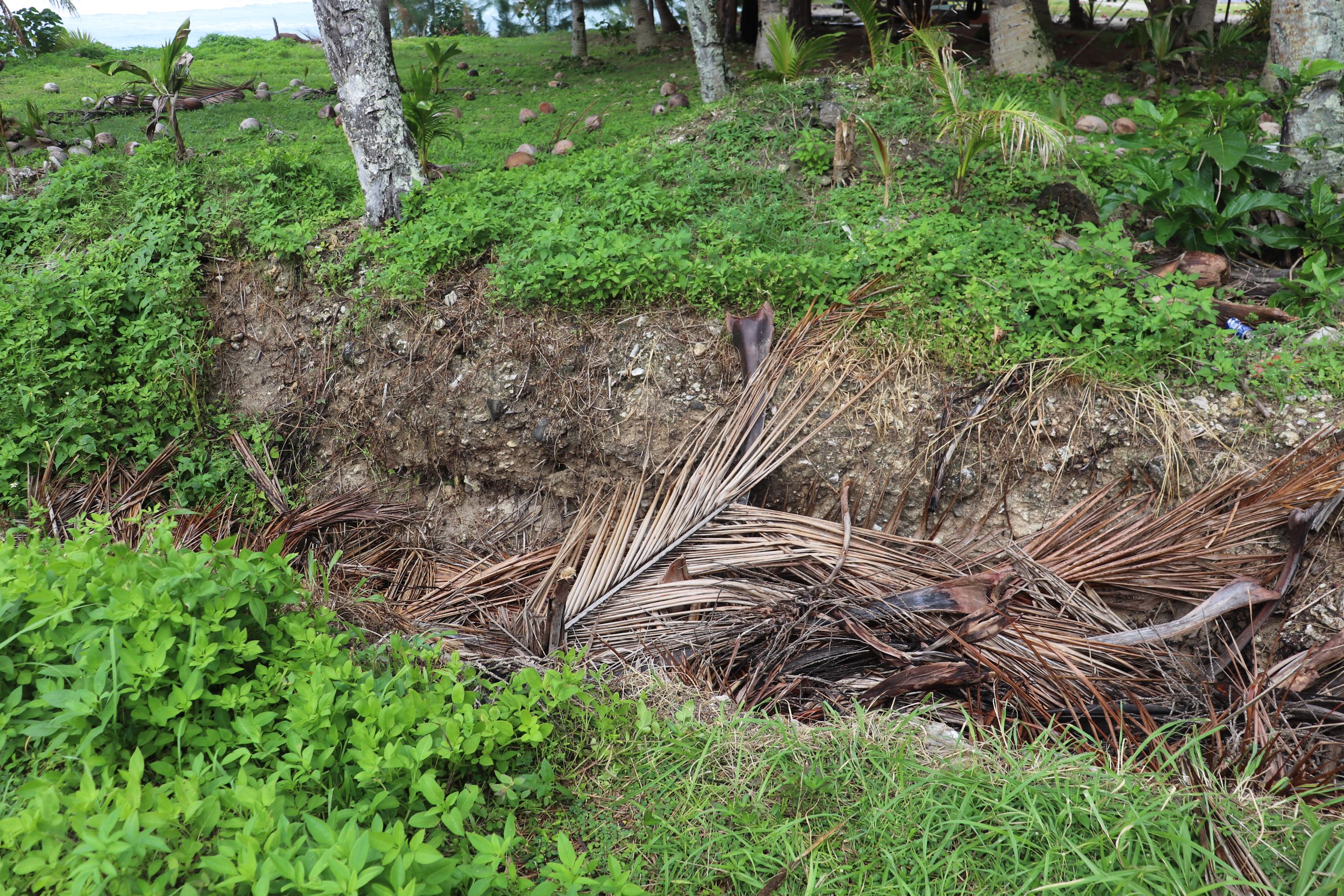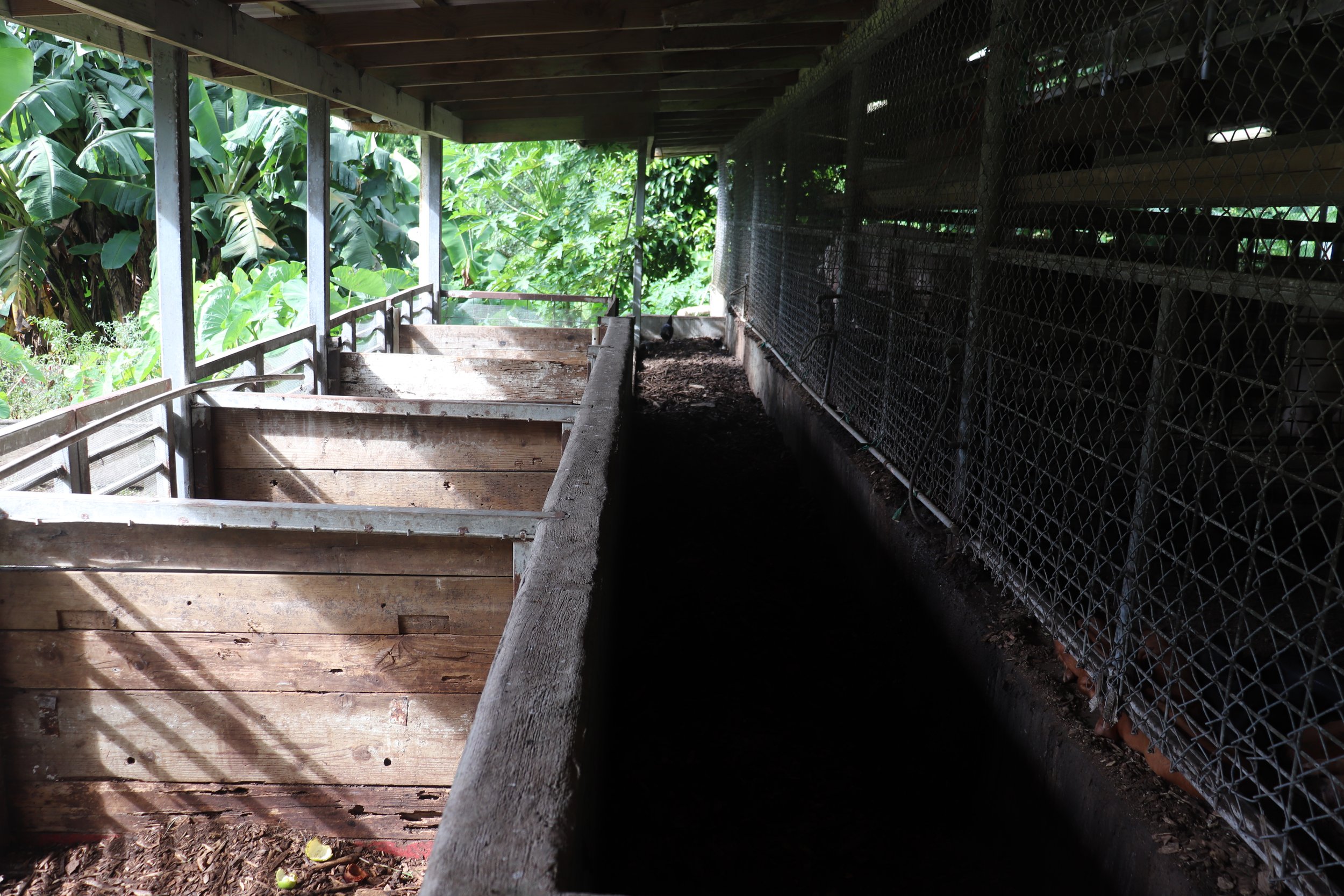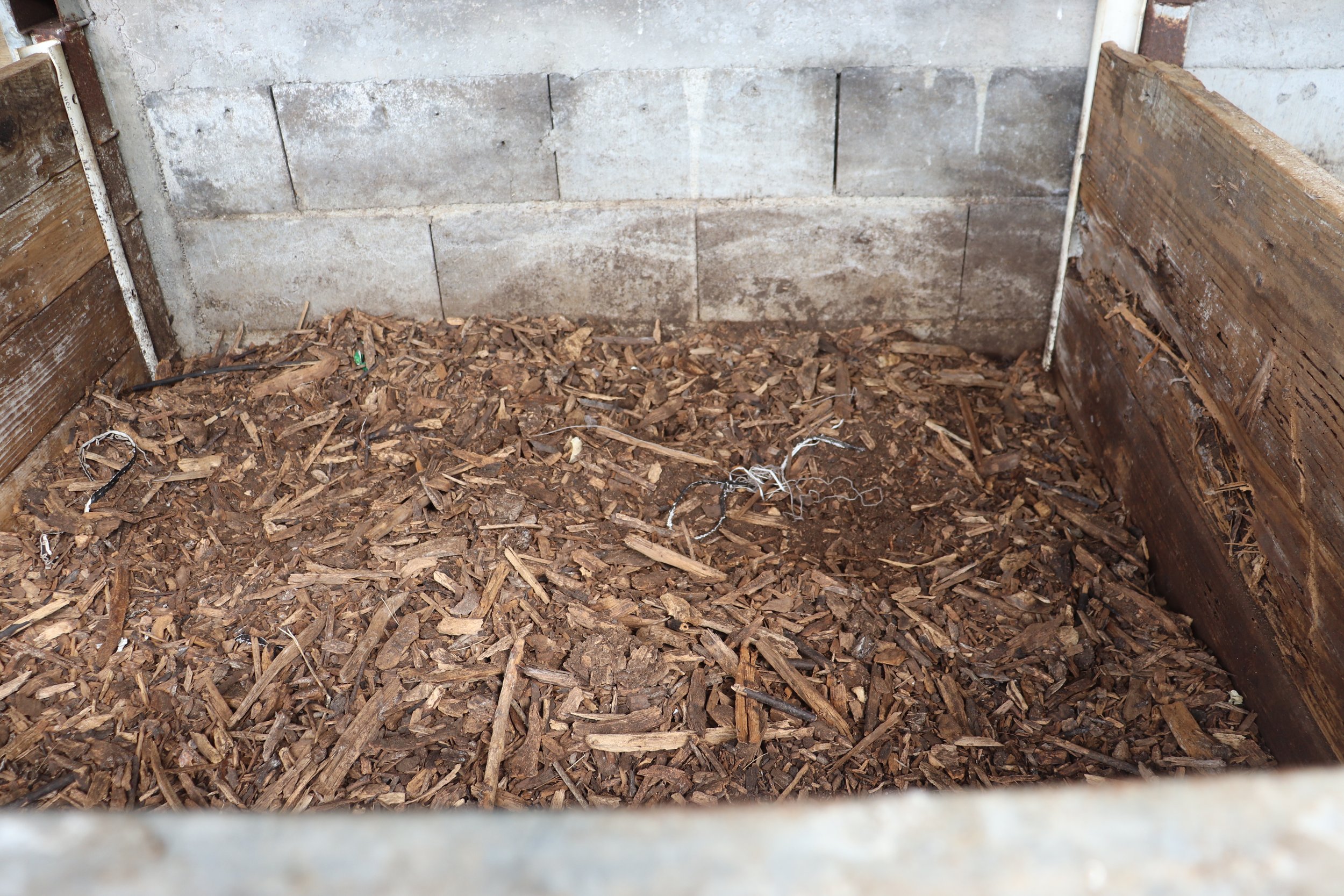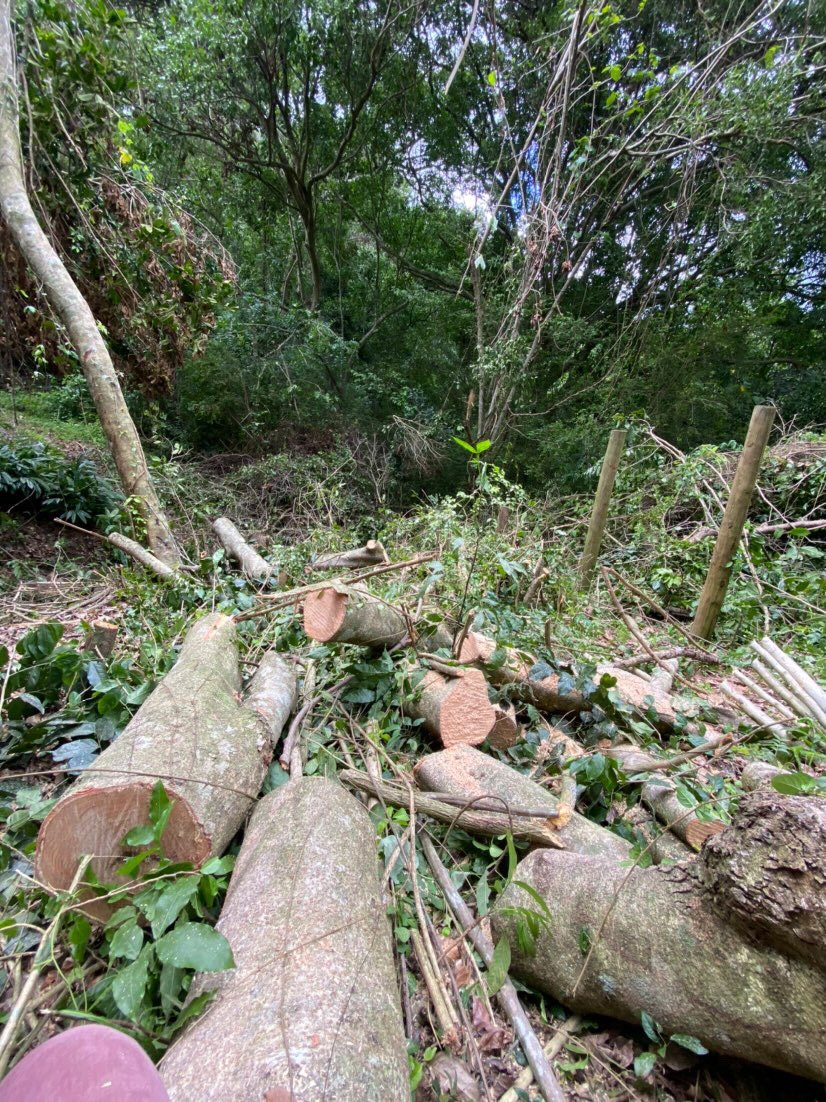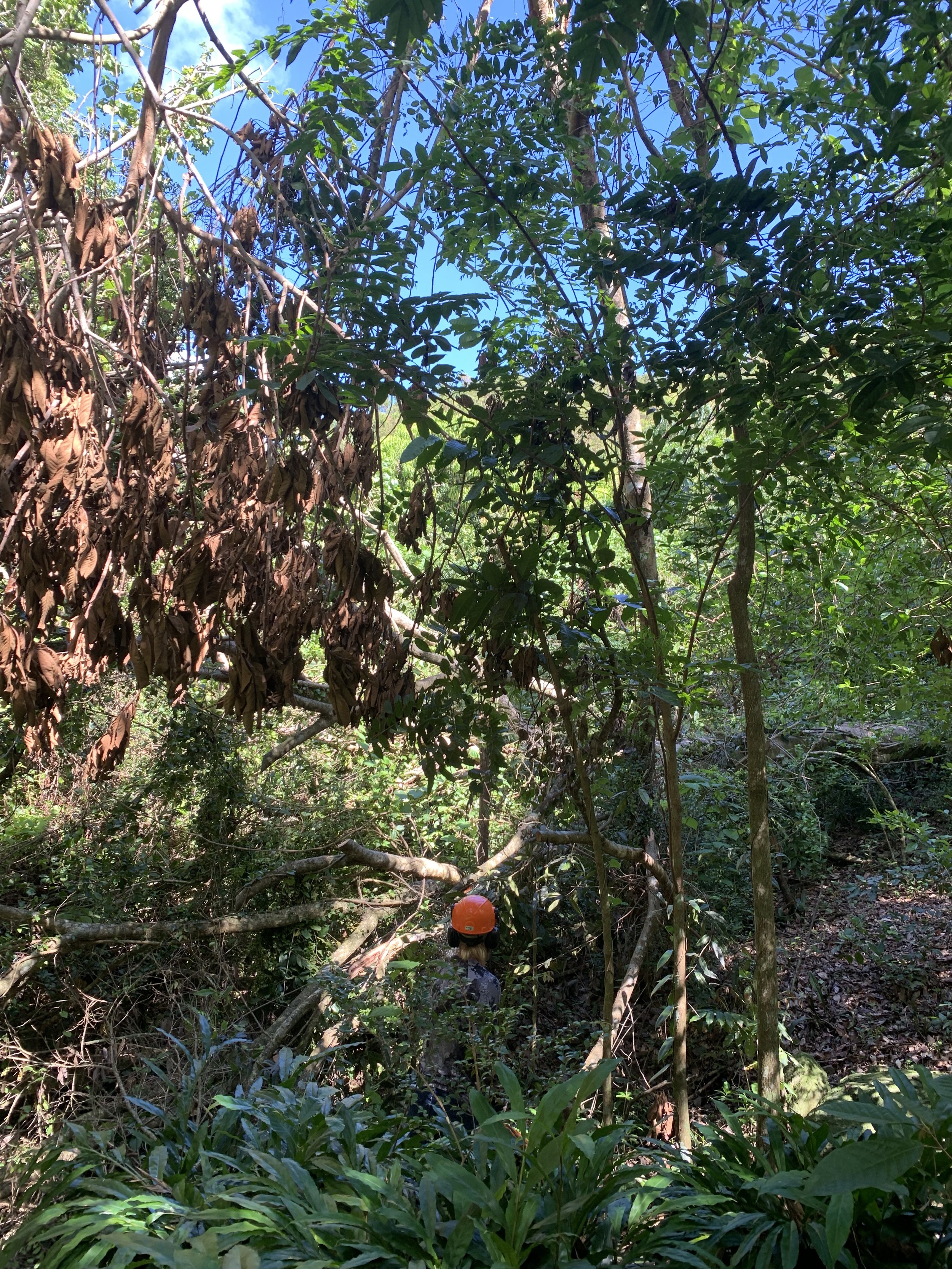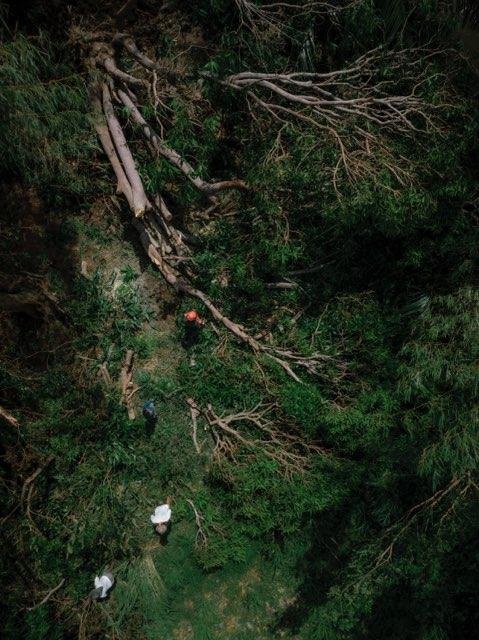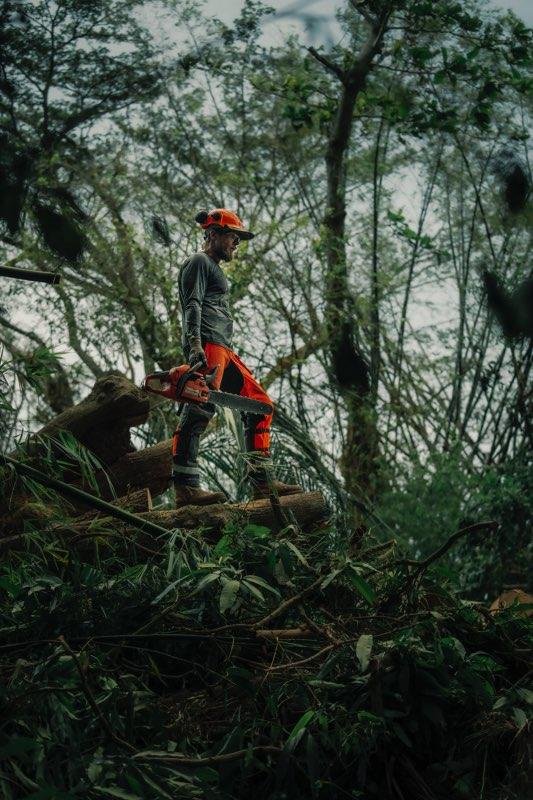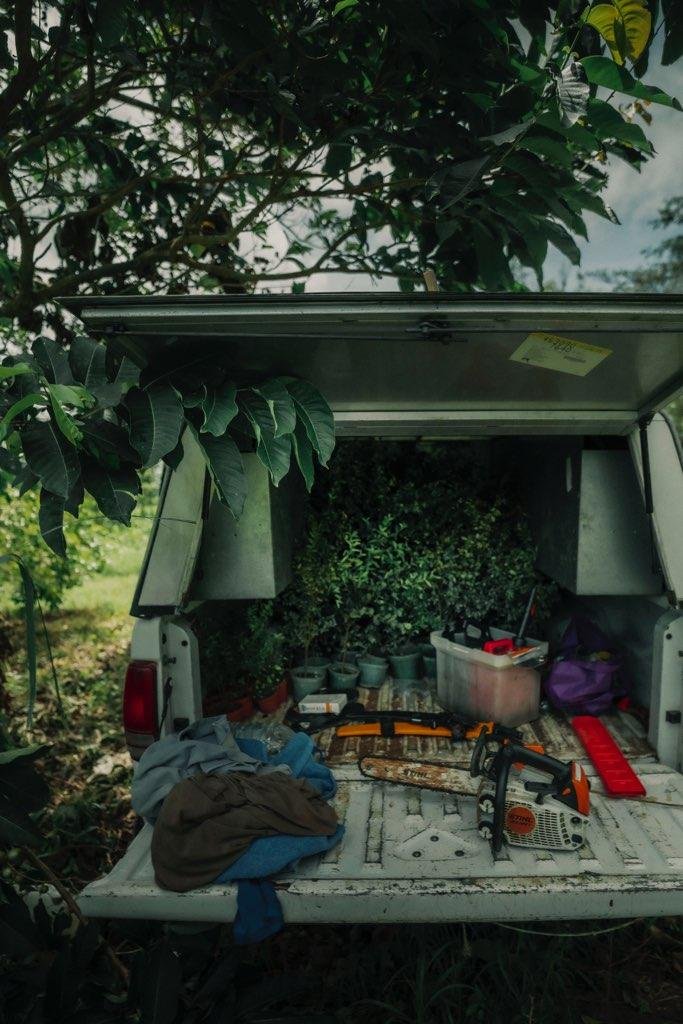PRACTICAL ORGANIC OPPORTUNITY PRODUCTION (POOP)
That’s right, we said it: POOP! Let’s talk about nutrient cycling.
Wasting waste is a relatively new process, and it’s super destructive for the planet. From the chemicals dumped into watersheds to the fossil fuel consumption powering plants, it’s an input-intensive practice.
Instead of nourishing plants with the nutrient cycle, we remove materials, add harsh treatment compounds, and release the results into watersheds. Now that practice is a waste!
Nature-based practices build soil health and water security, which build food security and circular economies.
Cute Piglets!
(Sustainable litter practices!)
These piglets are chowing down on green leafy snacks. They are demonstrating a successful pilot of a deep litter piggery system. This system is more efficient than the concrete wash-down pads and a better environment for the piglets. In fact, this nature-based system is so efficient it can absorb more liquid than the pigs can produce! That’s just fine by the piglets, because enjoying a nice wash with the barn hose is one of their favorite pastimes.
Standard gray-infrastructure piggery alternatives include wash-down systems, where the pigs stand on concrete pads and the waste is hosed off the floor. Even when these systems are diverted to septic tanks, the holding tanks are often overwhelmed and untreated water flows straight into coastal waterways.
In a deep litter system, not only is the composting-in-place deep layering method softer for the pigs to stand on, it’s less labor for the farmer. Layering in fresh surface layers that safely compost in place reduces the work hours, energy (human and fossil fuel) requirements, is better for the pigs, and protects groundwater. It’s a win in every dimension!
Chincoteague Ponies &
Protecting Virginia Waterways
Chincoteague island is famous for the barrier-island dwelling ponies of storied origins. The island has a long history of life on the water, including fishing, swimming, and boating on work and leisure watercraft of all kinds.
Coastal and island spaces often face challenges more similar to each other than to inland larger landmasses. High water tables, porous rocky or sandy soils and substrates mean there are rapid flowing connections between water treatment, groundwater, and coastal water. The gray infrastructure standardized in dense soils don’t work as well here, with pollutants and high nutrient loads escaping into the local waterways. We are working on a design collaboration for water treatment systems here that are appropriate for the nature of the barrier island. With nature-based practices, plants remove chemicals that pass through gray infrastructure systems untouched, nutrient loads are reduced to very low or undetectable levels. By building a nature-based green-gray hybrid water treatment, the water can safely and with no energy cost be reclaimed by nature’s own microbial processes to reuse standards, safely watering food forests, green fire breaks, and other vegetative practices.
Nature Based Solutions are Climate Resilient
This bioreactor garden system, built for the Parador Guánica 1929 in Puerto Rico, is still thriving five years after installation. Requiring no maintenance other than occasionally trimming back the verdant vegetation, the system treats water from the hotel. The vetiver grass works as a solar-powered pump, drawing off water volume with energy from the abundant sunshine. During weekdays, there is no outflow at all, the plants absorbing the entirety of the water volume into their root mass. During normal, non-holiday weekends, the treated water reaching the leach field is still minimal volume. The water is treated to a very high standard, far exceeding requirements. The system has continued to function through hurricanes and earthquakes. Nature-based solutions are highly climate resilient!
Syntropic Agroforestry
We all know entropy when we see it, the steady march toward chaos of even the most orderly system. Nature calls for a perspective shift, thinking about energy and processes that accumulate richness, rather than reduce over time. Commercial agriculture calls for additives in fertilizer, chemicals, and pesticides. Syntropic approaches are about building complex, dynamic, living systems that thrive working in tandem with each other, nature’s processes creating complexity and abundance.
In Puerto Rico, we are making progress planting an agroforestry buffer, encouraging thriving growth. These syntropic systems produce food, provide wildlife habitat, stabilize erosion, and grow healthier soils. Nature knows! We are part of the system, and can learn from the land and help the environment thrive.
Building a Better Bioreactor Garden
This past year, we’ve engaged in a number of testing processes, and the data are exciting! Not only do bioreactor gardens outperform septic systems, they reduce key nutrient levels to low or undetectable levels. But why stop there? We’ve progressed into designing systems for safe water reuse, based on the best scientific methods and building on traditional practices. We’ve had successful pilot practices for building these dynamic water treatment garden systems in Costa Rica, Hawaii, and Palau.
Reclaiming water resources stops throwing money and nutrients away, and supports sustainable, resource-secure communities and economies. Wastewater gray infrastructure systems were developed for public health in dense population centers, but the systems and standards are out of date. They require, and often don’t receive, frequent and expensive maintenance. Centralized wastewater treatment is energy and chemical intensive, and removes humans from the nutrient cycle.
People created a problem by treating what comes out of our bodies as waste rather than as part of the broader natural nutrient cycle. Now we’re leading with science, moving to address the aspects of our emissions that could be problematic (pharmaceuticals, bacteria, excess nutrients) toward a healthy, holistic system. These lower-cost, lower-carbon systems require no energy input to treat water to cleaner standards than any engineering alternative. Nature-based processes are traditional and future-proof, far more climate resilient than gray infrastructure solutions.
Awards
We are honored to have been recognized for making positive change in nature-based practices in several categories this year!
We were recognized as a finalist for the Global Water Changemaker awards by the UN and World Bank.
The IUCN Blue Natural Capital Financing Facility funded our wastewater work in Palau.
Grand Challenges Canada recognized our pioneering work on nature based wastewater management in Costa Rica with our partner Wildlife Conservation Association in Nosara.
We are honored and excited to be part of making waves for sustainable solutions!
Thankful for You!
Our work is made possible by the generous support of our donors and funders. You can be part of the change!
Every donation helps. You can support our operations and new research and development, or make a donation to a specific project or region. We work across the Pacific, Caribbean, and the Chesapeake Bay on the US East Coast.
You make innovation a reality as we turn funds into sustainable nature-based engineering solutions for people and the planet.
Your support makes our ongoing work possible.
New Bioreactor Garden data from Palau!
Can you find the bioreactor garden in this picture?
Thriving Bioreactor Garden
The bioreactor garden we established here in Palau a few months ago is thriving! The plant cover has grown well with the natural nutrient inputs.
What a difference a few months makes!
The plant cover growing from the upper layer of the bioreactor garden system quickly flourished.
The plants integrated into the nature-based system design draw off nutrients and water volume, working in tandem with the active biological processes occurring within the system structures.
What's a Bioreactor Garden?
The Bioreactor Garden is a nature-based treatment practice that purifies the nutrient and pollutant loaded wastewater resulting from traditional septic systems. This green infrastructure produces safe groundwater.
A Bioreactor Garden is a green infrastructure system added in-line to standard septic wastewater treatment. Bioreactor Garden systems use nature-based processes, treating wastewater to a very high standard. These natural processes mimic the actions of wetland filtration in a concentrated system. The contained system efficiently removes the contaminants and excess nutrients that cause problems in watersheds, pressuring ecosystem and community health.
By filtering system effluent through layers including activated biochar, beneficial bacteria, woodchips made from invasive species (feeding two birds with one seed!), and other filtration media, a Bioreactor Garden system concentrates nutrient removal from the water.
Water output from Septic System (left), Bioreactor Garden (right).
Bioreactor Garden systems are far more effective than traditional gray infrastructure septic systems, rendering the output water clean and safe to enter local groundwater. Three cheers for Mother Nature and nature-based systems!
Comparing Bioreactor Gardens vs. Septic-Only Systems: Green Infrastructure is a Clear Winner!
These data were collected using photometry for nutrient levels and a field fluorometer to measure chlorophyll a and optical brighteners. The difference between the systems is clear!
Nature based wastewater systems produce much less overall volume, as the plants absorb much of the water. The output is also much cleaner than results from a septic-only system.
Protected Groundwater
The monitoring station downstream measuring groundwater effects found that the Bioreactor Garden is effectively protecting groundwater quality.
The implications for these nature-based systems to protect water quality in ecosystems and communities around the world are great!
Join the conversation on LinkedIn at the Nature-Based Wastewater Solutions group: https://www.linkedin.com/groups/12918717/
Now Hiring: Videographer, American Samoa
Location: American Samoa
Job Description:
Ridge to Reefs is seeking a qualified and motivated individual to serve as a videographer for several agriculture related projects in American Samoa. The Videographer will coordinate with local partners and Ridge to Reefs staff to film projects, edit videos, and post them online across social media platforms for visibility. The Videographer will create shorter videos for social media as well as longer training videos for local farmers. Videos will be posted on YouTube and across social media platforms for visibility, and may be used for training purposes.
Responsibilities:
Coordinate with local staff to set up times to film project activities
Film project activities with high quality camera and recording equipment
Edit footage and create videos for a variety of contexts (e.g. social media, training videos, etc.)
Create and post videos on a local YouTube channel for American Samoa sustainable agriculture
About the Organization:
Ridge to Reefs (RTR) is a nonprofit organization whose mission is to improve water quality and protect coral reef ecosystems by reducing land-based sources of pollution upstream. RTR has worked in American Samoa for over 5 years developing projects that reduce pollution from agricultural and urban settings. RTR is hiring this position under an 18-month Natural Resources Conservation Service (NRCS) Urban Agriculture and Innovative Production grant.
Compensation:
Base rate $25/hr for all filming and editing tasks OR paid by project.
Qualifications:
At least 2 years of professional experience filming, directing, and editing videos for clients
Must have your own camera, microphone, computer and other necessary equipment for video production
Must have your own vehicle and be able to meet project staff in the field
Based in American Samoa (projects will take place in Tutuila and potentially on Manu’a)
Ability to coordinate effectively and in a timely manner via phone and email with the project team
Ability to be flexible based on the needs of the project team, weather, etc.
Experience using YouTube and social media to post videos
Ability to meet deadlines and set clear expectations for time needed to complete tasks
To Apply:
Please send at least two videos you have produced and a description of why you are interested in and qualified for this position to Kelly Harris at kelly@ridgetoreefs.org by Oct 20th, 2023.
Non-Chemical Weed Management Workshop Highlights from Manati, Puerto Rico
Live workshop demonstrations: best-fit technology & specialized techniques
Bringing regenerative farming practices into existing production spaces builds soil health, diversifies farmer income streams & supports growing more healthy food crops. Healthy soils & regenerative agriculture practices build food security & disaster resilience here in Puerto Rico.
Thanks to everyone who attended the Sustainable Agriculture Workshop in Manati, Puerto Rico! We had a great turnout for a great day of training & peer-to-peer learning!
This bilingual workshop focused on sustainable agriculture strategies well-suited to Puerto Rico. We focused on non-chemical weed management, cover crop production, harvest technology, harvest strategy, and local sourcing of agricultural inputs & materials.
Our heartfelt appreciation to all the participants & faciliators who made this workshop possible!
Workshop presentation sessions. Live translation provided by AlterEgo, PR
We held a workshop at Hacienda Esperanza in Manati, home to local non-profit Para La Naturaleza. The topic was "Non Chemical Weed Management Techniques." Experts from the National Center for Appropriate Technology, Para La Naturaleza, University of Puerto Rico Mayagüez, local business experts, and Ridge to Reefs gave presentations on these topics. Participants engaged in live demonstrations & peer-to-peer learning.
Appropriate techonology & specialized equipment for Puerto Rican small farms
Many of the producers currently engaged in farm soil health regeneration with the On-Farm Trials Project came to share their experience & learn from each other and the presenting experts. The On-Farm Trials project is focused on regenerative production agriculture systems in Puerto Rico. Regenerative systems include: crop diversification, nitrogen fixing cover crops, green manure species, reduced tillage regimes & on-farm production of non-chemical fertilizers and other agronomic inputs.
Calling chocolate lovers! This is a beautiful cacao pod growing in Puerto Rico.
Francisco Arroyo of Motocultores, LLC and Dr. Joachim Chong from University of Puerto Rico Mayaguez gave live demonstrations on Cover Crop Termination Techniques as well as Reduced Tillage Techniques. Participants experienced using a Flail Mower and Power Harrow for preparing soil areas for planting.
Francisco Arroyo of Motocultores demonstrating specialized small farm equipment
Dr. Joachim Chong and Francisco Arroyo demonstrating equipment use
Phal Mantha from Ridge to Reefs gave a practical demonstration on non-chemical herbicide alternatives. Participants experimented with techniques for making their own broad spectrum, non-selective herbicides utilizing D-Limonene, plant based essential oils, and citric acid. Participants learned about effective application techniques, timing, and application rates.
Workshop presentations were given by Andy Pressman from NCAT, Phalgun Mantha and Ricardo Liquet-Gonzales rom Ridge to Reefs, translated by Guillermo Cordero from AlterEgo
Thanks to all facilitators, attendees, volunteers & funders who made this workshop possible!
Funded by USDA NRCS Grant # NR213A750013G006.
Special thanks to:
Guillermo Cordero from AlterEgo, who donated professional Spanish-English translation services.
Gustavo Arroyo, who donated agricultural expertise, time and served amazing coffee.
Para la Naturaleza, who hosted the workshop space and PLN staff Salvador Coleman and Carlos Torres Baez who assisted with the workshop.
Dr. Joachim Chong of the University of Puerto Rico, Mayaguez is an expert in biochar & production of bio inputs from local waste (hello, upcycling into agriculture income!).
Francisco Arroyo of Motocultores, LLC, provided expertise and training in Walk-Behind Tractors and the use of Small Farm Implements in Puerto Rico.
All the workshop attendees, including our On-Farm Trials project partners, other local farmers, home gardeners & community members who came out to spend their day exploring non-chemical regenerative agriculture techniques.
Coordinating the workshop were Andy Pressman and agriculture specialists from the National Center for Appropriate Technology (NCAT).
Coordinating staff from Ridge to Reefs were Phal Mantha, Director of Agriculture and Sustainability, and Ricardo Liquet-Gonzalez, Puerto Rico Project Coordinator for Ridge to Reefs.
Stabilizing Erosion at the Airport in Palau
Right: eroding airport hillside. Left: installation of hill stabilization methods
Managing hillside erosion here is key to protecting the health of the watershed & local ecosystems.
Erosion here has been a long-term contributor to sediment loads in the Airai Bay watershed. Once heavy rains and sediment laden water hit a hard surface (like a road), they flow quickly into storm drains which deliver sediment pollution to streams.
The streams in turn and deliver the sediment right to coastal waterways. In this case, the sediment load ends in Airai Bay, which is home to important breeding grounds for the goatfish and other local sensitive species.
Stabilizing the hillside with nature-based techniques keeps sediments in place, supports plant growth, and protects Airai Bay and coastal waters in Palau.
This look at watersheds as water flows from ridge to reefs guides our nature-based ecosystem restoration and protection designs!
Nature knows - we use bioengineering principles to adapt natural processes to restore and protect watershed systems, like this one.
This is part of the airport erosion site in Palau.
We used bamboo, beetle palms, vetiver grass, and other locally available and easily sourced materials. This sourcing contributes to circularity and independence from imports. We also used compost amendments to kick-start the growth of erosion controlling plants to stabilize the slope.
These plants also intercept water flowing downhill! We planted them perpendicular to water flows. This sets them up to capture and evapotranspirate water (transpiration: plants draw water in through roots).
This pilot will soon be expanded to address the whole hillside and can also serve as a model for other sediment source areas along the Compact Road in Palau.
For installation, we worked with Palau Community Collge Cooperative Reserach and Extension (PCC-CRE), Leonard “Gorkas” Basilius, Director of PCAA (Palau Community Action Agency), the Palau National Aviation Administration (PNAA).
This pilot effort was funded by the Department of the Interior Coral Reef and Natural Resource Initiative.
Thanks for following along with our pilot stabilization efforts at the Palau airport! Next steps and further stabilization and restoration activities coming soon!
American Samoa Community & Coral Reefs
Welcome to American Samoa! Read on for the Spring 2023 udpates :)
Ship at Harbor & Community Efforts
The island of Manu'a is surrounded by ocean. Depending on weather, a large boat arrives with shipment of pallets of items purchased from the the main island. The shipment boat can't come into the Manu'a harbor, so the community comes together when the boat arrives.
The community members take their own boats out to the big boat. On shore, people help each other fill their trucks full of things they need. This collaboration is a testament to the importance of community in food and resilience security. If there is a storm and the boat can't come, or if the waves are too big, there are meaningful delays. This is a clear demonstration of what resources to never take for granted, and the critical importance of climate resilient community systems.
Wetlands Work
Manu'a is mostly pristine. This wetland is important for preserving water quality. Can you see how the wetland comes right up to where the shore meets the beach? This juxtaposition of ecosystems naturally manages water flows. Wetlands provide critical filtration, slowing down water flowing from land to the reefs, and protecting the islands from high storm wave energy. People working to preserve the wetland post the signs, "Keep Manu'a Beautiful."
Protecting Coral & Public Health: Denitrifying Curtain
Progress on building a denitrification curtain! Manu'a has steep mountains and the communities are right on the shore. Rain floods through ravines creating temporary flooding waterfalls from the roads, carrying pollution of any sort directly to the ocean. We are working to intercept water flows, building a big denitrification curtain perpendicular to the ravine.
Keith AhSoon, American Samoa Restoration Coordinator for Ridge to Reefs, is preparing this area and building the denitrification curtain. The first steps shown here are digging the trenches and laying in palm fronds to establish a wall. This slows and filters runoff rainwater before it goes into the ocean.
Harvesting Tumeric
Dustin Mule-Snow harvesting tumeric grown on his farm, kindly offering some to our traveling staff. Tumeric offers many health benefits!
Piggery Solutions
This is the piggery at the American Samoa community college. They have 2 kinds of systems in one here. One half is "Wash Down," washing manure down into a trench which flows to a septic tank or out to the environment where it can cause surface or groundwater contamination. The challenge is, even when a septic system is attached pumping the septic tanks, the water and power authority will not pump these; once the septic system fills, the overflow goes out into the environment. Also, the septic systems can also contribute to groundwater nitrate pollution that is harmful to coral reefs. This type of wash-down system, if the septics are not present or pumped, contributes to public health crises, including leptospirosis outbreaks.
The other side of this system is a "Dry Litter System." Here, a pig stands next to a a pile of composting wood chips used in the "Dry Litter System." The challenges with the "Dry Litter System" are 1) a lack of available wood chips and 2) a very labor intensive process to remove the waste and re-cover with expensive or unavailable wood chips.
A solution to these challenges is a "Deep Litter Piggery System." In this system, cover is simply layered on top of the manure for on-site composting. This method is less labor intensive, effective, and protects downstream water quality.
This work was funded by the Department of the Interior American Samoa DOI Coral Reef and Natural Resources Grant. The “Decreasing Land Based Sources of Pollution to Coral Reefs in American Samoa" project supports building dry litter piggery applications & denitryfing curtains, which are two approaches identified as the best-fit technology for addressing piggery and runoff water quality challenges in these sites in American Samoa. The sites and methods were identified in partnership with the Coral Reef Advisory Group (CRAG), the National Oceanic and Atmospheric Administration (NOAA), the Department of Marine and Wildlife Resources, and Ridge to Reefs. This collaboration developed the Vatia Watershed Action Plan for Water Quality and Coral Reefs, published in July 2019.
Hurricane Recovery Update
Hurricane recovery work moves forward every day! Ricky Liquet-Gonzalez, Puerto Rico Project Manager for Ridge to Reefs, and the team have been working hard to restore access to small farms impacted by the hurricane.
Power continues to be an issue in many parts of the island, but that isn't slowing the team down!
Ricky says, "I'll run out of clean clothes before energy and will to continue!"
Image: Ray Mesh
Re-opening farm access continues to be the first priority, and progress is being made with another farm each day. The team has made incredible progress with chainsaws and manual labor! For at least several farms, we can confirm we will need heavy equipment rental to clear their access roads.
Farmers report losses of crops, including cassava, Jamaica flower, okra, and corn. Fruit trees in their 5th and 6th years after planting were destroyed. Soursops, star apples, sugar apples, and avocado trees washed away, and banana harvests were destroyed. Once access is restored, farmers can begin the hard work of replanting. In the case of some of these fruit trees, a half a decade clock begins again. Donate today to support purchase of seeds and trees to replace lost crops!
Four images below: Ray Mesh
